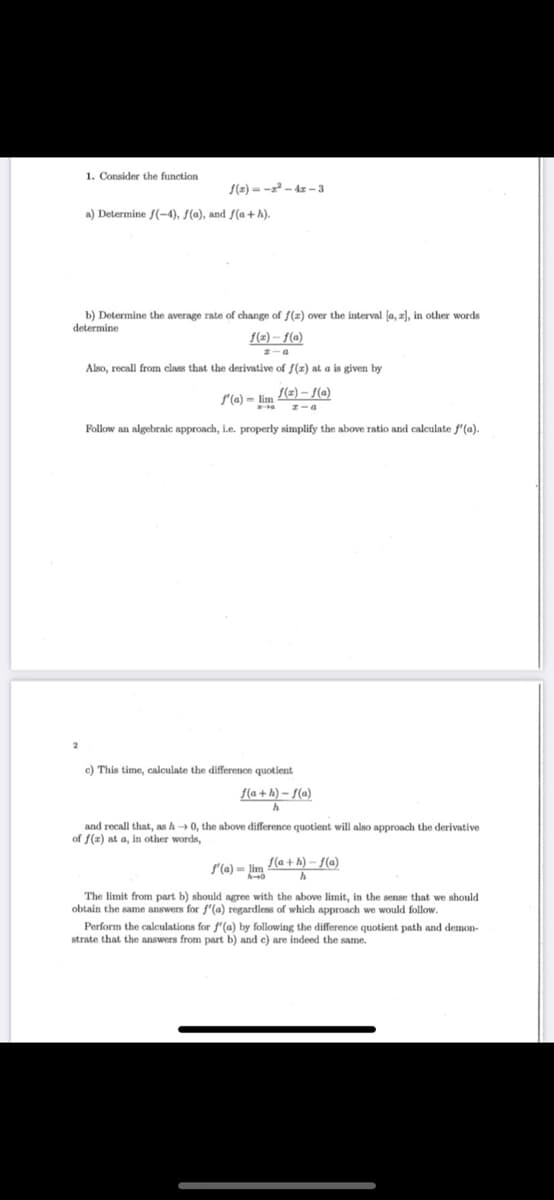College Algebra (MindTap Course List)
12th Edition
ISBN:9781305652231
Author:R. David Gustafson, Jeff Hughes
Publisher:R. David Gustafson, Jeff Hughes
Chapter2: Functions And Graphs
Section2.6: Proportion And Variation
Problem 18E
Related questions
Concept explainers
Contingency Table
A contingency table can be defined as the visual representation of the relationship between two or more categorical variables that can be evaluated and registered. It is a categorical version of the scatterplot, which is used to investigate the linear relationship between two variables. A contingency table is indeed a type of frequency distribution table that displays two variables at the same time.
Binomial Distribution
Binomial is an algebraic expression of the sum or the difference of two terms. Before knowing about binomial distribution, we must know about the binomial theorem.
Topic Video
Question
100%
Question 1C

Transcribed Image Text:1. Consider the function
S(2) = -s² – 4z – 3
a) Determine f(-4), S(a), and f(a +h).
b) Determine the average rate of change of f(z) over the interval [a, z), in other words
determine
f(2) – f(a)
Also, recall from class that the derivative of f(z) at a is given by
S(2) – S(a)
L'(a) - lim
Follow an algebraic approach, i.e. properly simplify the above ratio and calculate f'(a).
c) This time, calculate the difference quotient
f(a + h) – f(a)
and recall that, as h0, the above difference quotient will also approach the derivative
of f(z) at a,
other words,
f(a) = i
S(a + h) – f(a)
The limit from part b) should agree with the above limit, in the sense that we should
obtain the same answers for f'(a) regardless of which approach we would follow.
Perform the calculations for f'(a) by following the difference quotient path and demon-
strate that the answers from part b) and c) are indeed the same.
Expert Solution
This question has been solved!
Explore an expertly crafted, step-by-step solution for a thorough understanding of key concepts.
Step by step
Solved in 2 steps with 2 images

Knowledge Booster
Learn more about
Need a deep-dive on the concept behind this application? Look no further. Learn more about this topic, calculus and related others by exploring similar questions and additional content below.Recommended textbooks for you

College Algebra (MindTap Course List)
Algebra
ISBN:
9781305652231
Author:
R. David Gustafson, Jeff Hughes
Publisher:
Cengage Learning

College Algebra (MindTap Course List)
Algebra
ISBN:
9781305652231
Author:
R. David Gustafson, Jeff Hughes
Publisher:
Cengage Learning